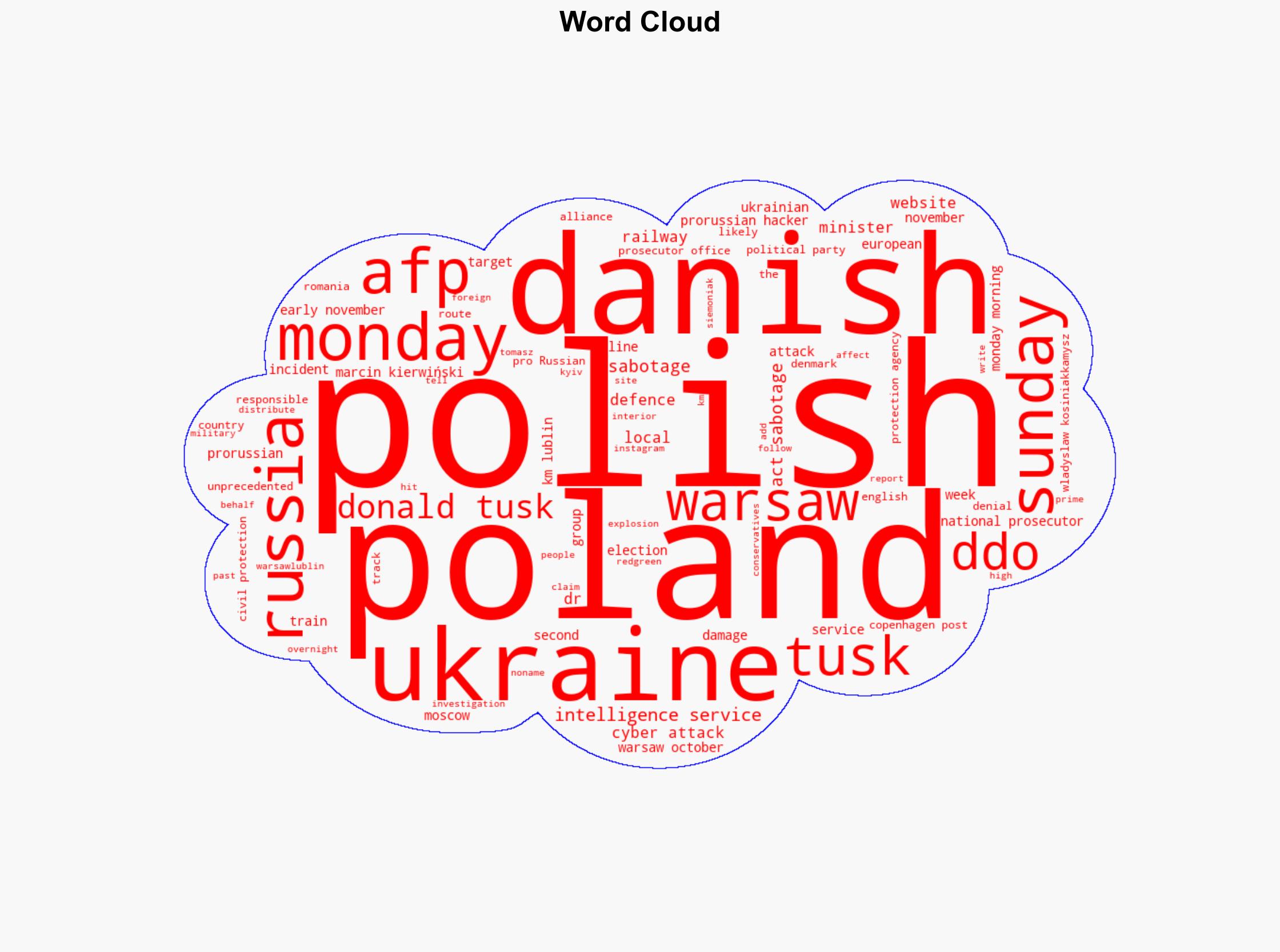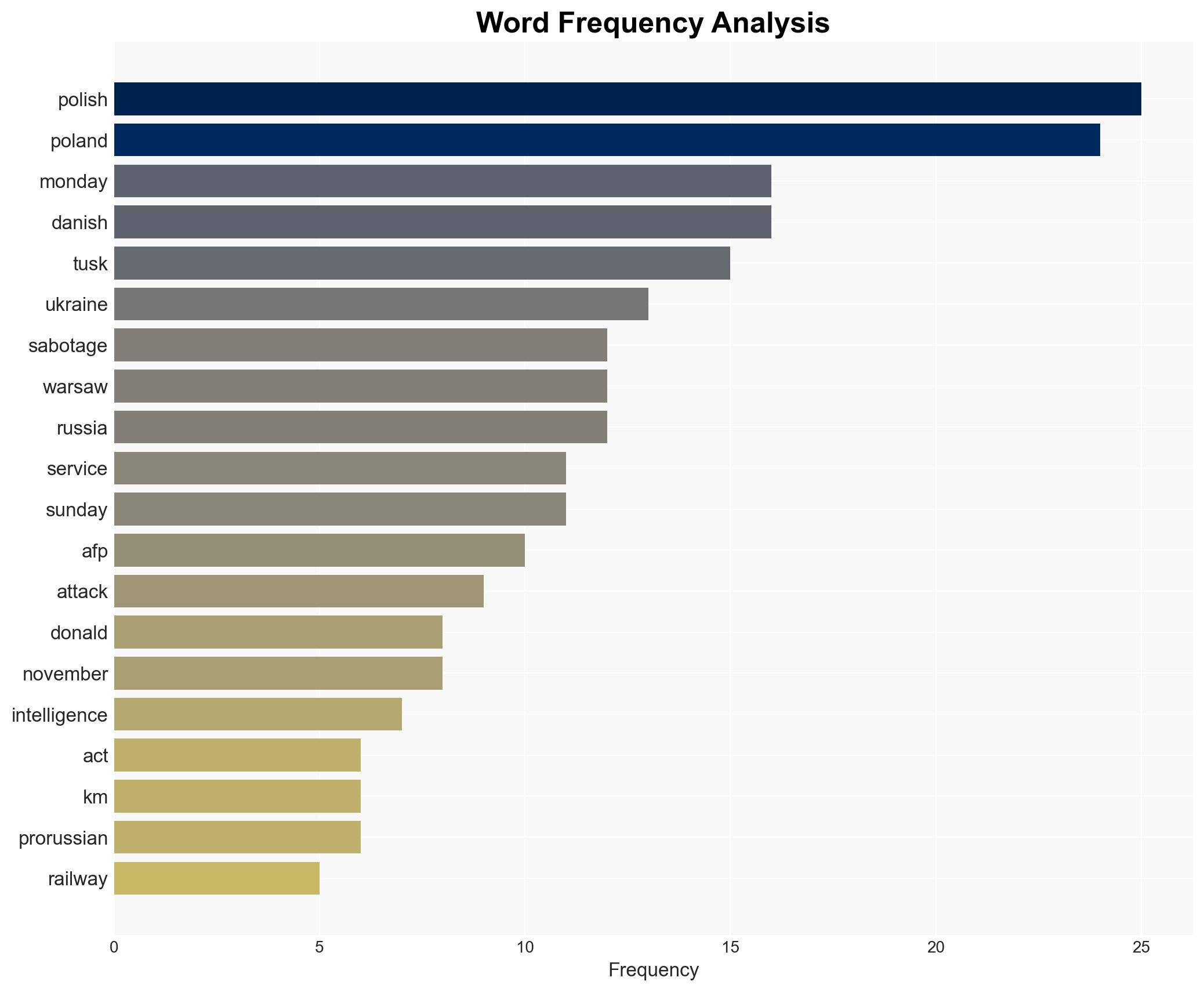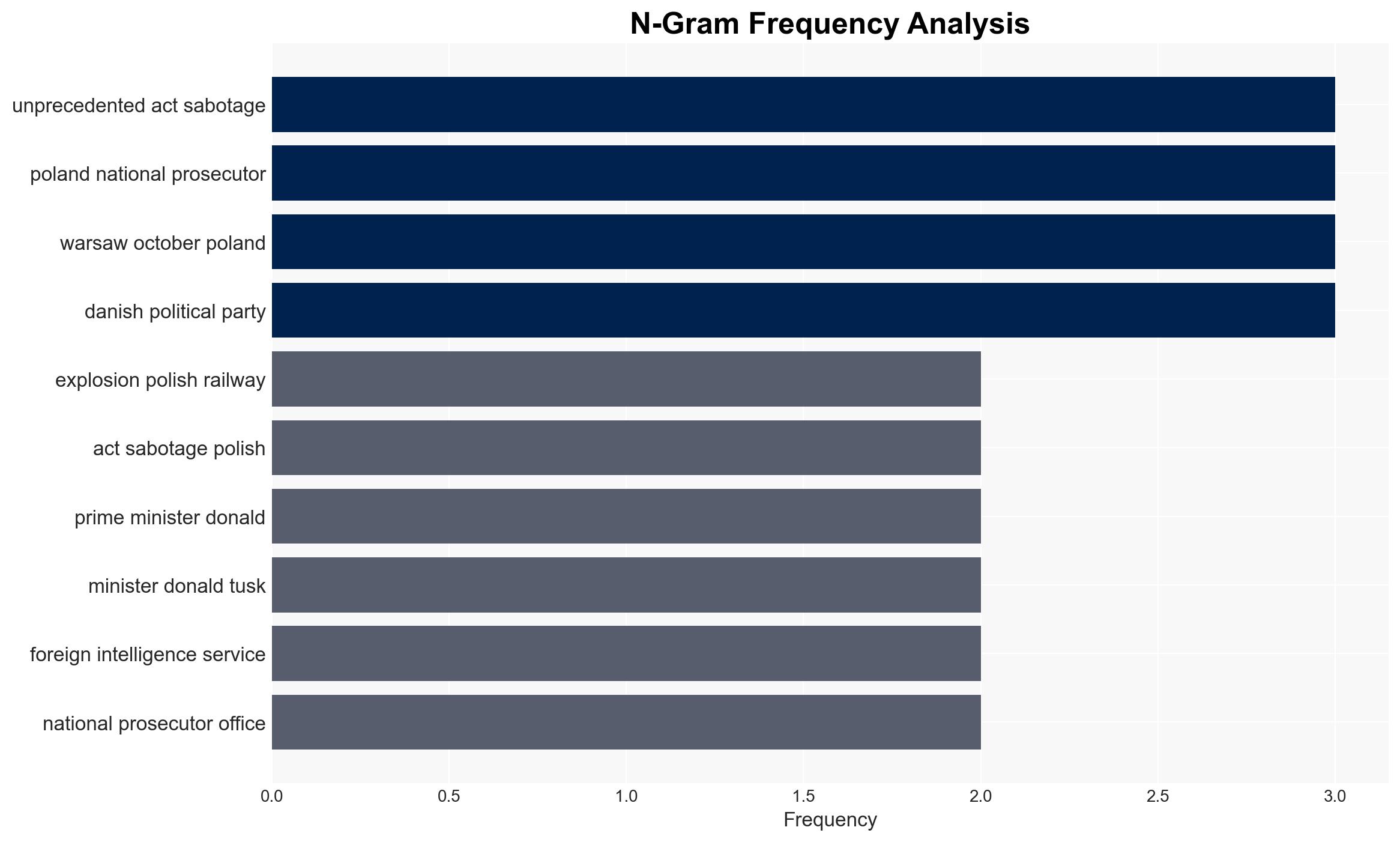Railway track blast in Poland ‘unprecedented act of sabotage’ Polish PM says – ABC News (AU)
Published on: 2025-11-17
AI-powered OSINT brief from verified open sources. Automated NLP signal extraction with human verification. See our Methodology and Why WorldWideWatchers.
Intelligence Report: Railway Track Blast in Poland
1. BLUF (Bottom Line Up Front)
The explosion on the Polish railway line is assessed with moderate confidence to be an act of sabotage potentially orchestrated by foreign intelligence, likely linked to Russia, given Poland’s strategic role in supporting Ukraine. Immediate strategic recommendations include enhancing security measures on critical infrastructure and increasing intelligence cooperation with NATO allies.
2. Competing Hypotheses
Hypothesis 1: The railway blast was an act of sabotage conducted by a foreign intelligence service, likely Russian, to disrupt Poland’s logistical support to Ukraine.
Hypothesis 2: The incident was a domestic act of sabotage by non-state actors with no direct foreign involvement, aiming to create political instability within Poland.
Hypothesis 1 is more supported due to Poland’s strategic importance in the Ukraine conflict and historical patterns of Russian hybrid warfare tactics, including sabotage and cyber attacks. Hypothesis 2 lacks substantial evidence of domestic groups with the capability or motive to execute such an operation.
3. Key Assumptions and Red Flags
Assumptions include the belief that Russia has the motive and capability to conduct such operations. A red flag is the potential for confirmation bias, given Poland’s historical tensions with Russia. Deception indicators include Russia’s consistent denial of involvement in similar incidents, which could be a strategic disinformation effort.
4. Implications and Strategic Risks
The incident could escalate tensions between NATO and Russia, potentially leading to increased military readiness or retaliatory cyber operations. Economically, disruptions in railway logistics could affect supply chains, particularly those supporting Ukraine. Politically, it may strain Poland’s internal security resources and increase public fear and uncertainty.
5. Recommendations and Outlook
- Enhance surveillance and security measures on critical infrastructure, particularly those supporting Ukraine.
- Increase intelligence sharing and coordination with NATO allies to identify and counter potential threats.
- Engage in public communication strategies to manage domestic perceptions and prevent panic.
- Best-case scenario: Increased security measures prevent further incidents, and diplomatic efforts reduce tensions.
- Worst-case scenario: Further sabotage leads to significant infrastructure damage and escalates military tensions.
- Most-likely scenario: Continued low-level sabotage and cyber attacks, requiring sustained vigilance and international cooperation.
6. Key Individuals and Entities
Donald Tusk, Polish Prime Minister; Marcin Kierwiński, Polish Interior Minister; Tomasz Siemoniak, Polish Special Service Minister; Wladyslaw Kosiniak-Kamysz, Polish Defence Minister.
7. Thematic Tags
Structured Analytic Techniques Applied
- Cognitive Bias Stress Test: Expose and correct potential biases in assessments through red-teaming and structured challenge.
- Bayesian Scenario Modeling: Use probabilistic forecasting for conflict trajectories or escalation likelihood.
- Network Influence Mapping: Map relationships between state and non-state actors for impact estimation.
Explore more:
National Security Threats Briefs ·
Daily Summary ·
Support us
·





